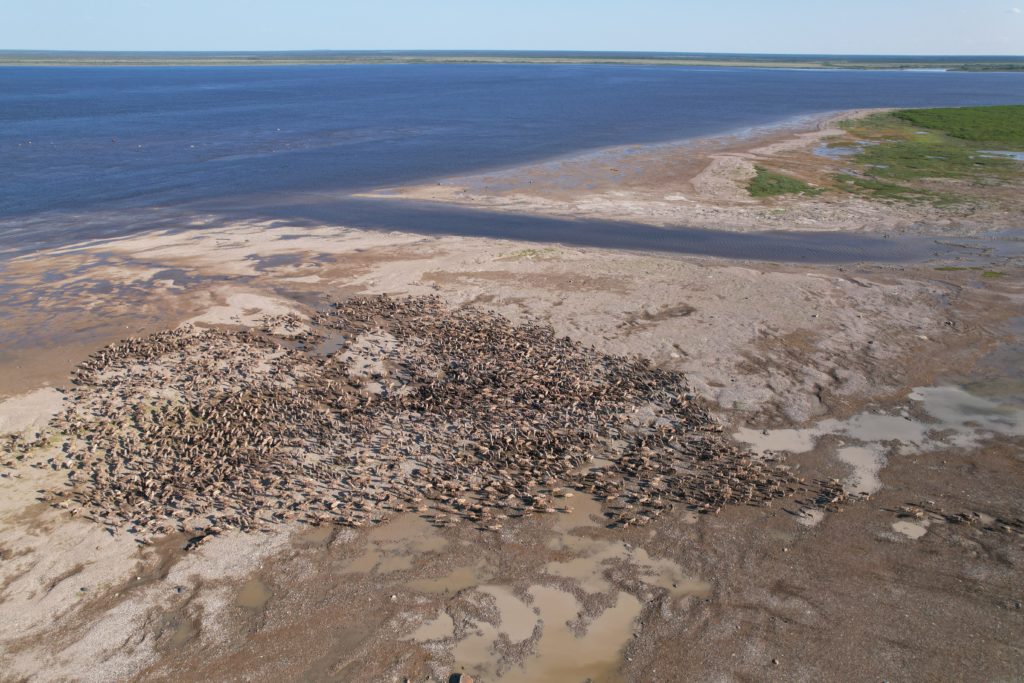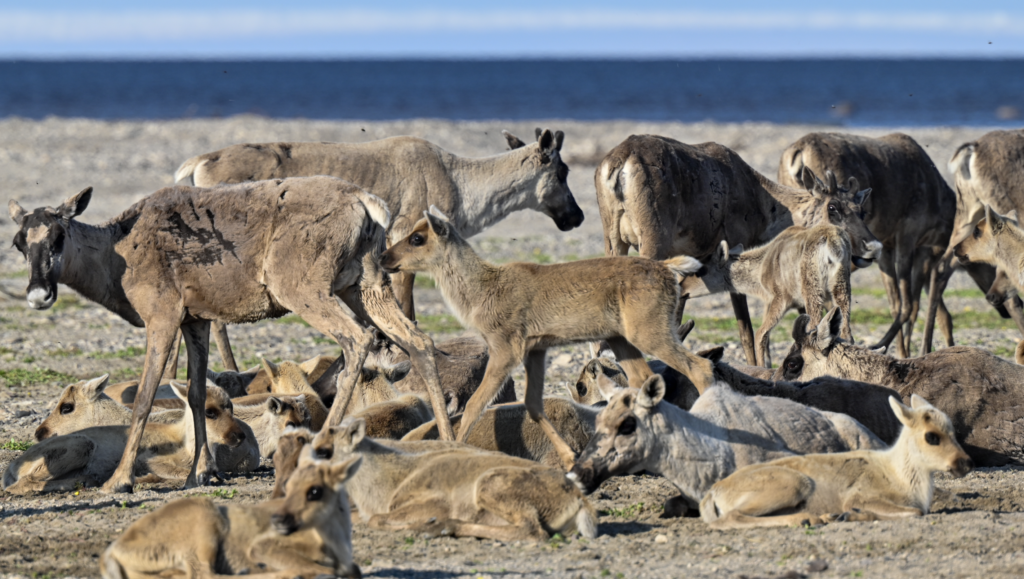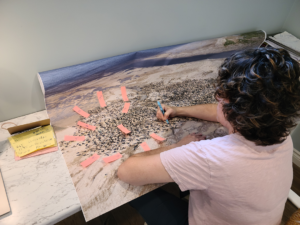On the second day of our expedition this past July to southern Hudson Bay someone called down from the roof of Sam’s cabin where they had been keeping an eye out for belugas, and yelled, they’ve merged!
The two caribou herds we’d been tracking had merged into one mega herd.
I scampered onto the roof and couldn’t believe my eyes. After more than two decades of working to conserve habitat and multiple trips to the coast, I had never seen so many caribou and calves in one place before. It was a like a caribou-palooza and the earth was letting us in on one of its secrets. It was a gift.
The intrepid Water Brothers were off like a flash and the drone was up. The shot you see here is the first-ever drone footage of southern Hudson Bay caribou.

Every year thousands of caribou migrate here.
They calve on the coast in the spring and remain here for another few weeks to escape bugs and to seek better weather.
They walk on the mudflats when the tide is out.
They spend part of the year walking on the ocean floor. I think it would be fair to say we can start referring to them as marine mammals, right?

These coastal caribou then seek refuge in the intact boreal forest. They cross thundering rivers and roam through the millions of the hectares of the wetlands of the Hudson Bay Lowland to get there. They cross provincial borders.
That this natural phenomenon persists is astonishing.
Unless we wipe them out of course. But it doesn’t have to be that way. We can make room for them. We don’t have damage and degrade their habitat through mining, hydro electric development and roads.
Scientists call this an aggregation. I still like mega herd.
I was determined to figure out just how many caribou we saw that day. Very quickly I realized I was going to have to count them by hand.
So I went to Staples to print the drone image (and I’m happy to report the staff behind the counter didn’t even look at me funny when I said what I wanted to print).
They expertly helped me determine the right size and resolution for the poster that would enable me to count them.
I then divided the herd into small sections with a pen and then used a highlighter to check off every caribou I could see in there.
I counted 3162 caribou.
As I told the Globe, these magnificent gatherings and migrations still happen.
In our province. Let’s make sure it’s that way for always.
Show your support for Indigenous-led conservation in southern Hudson Bay starting with the proposed Mushkegowuk National Marine Conservation. Send a letter here.


